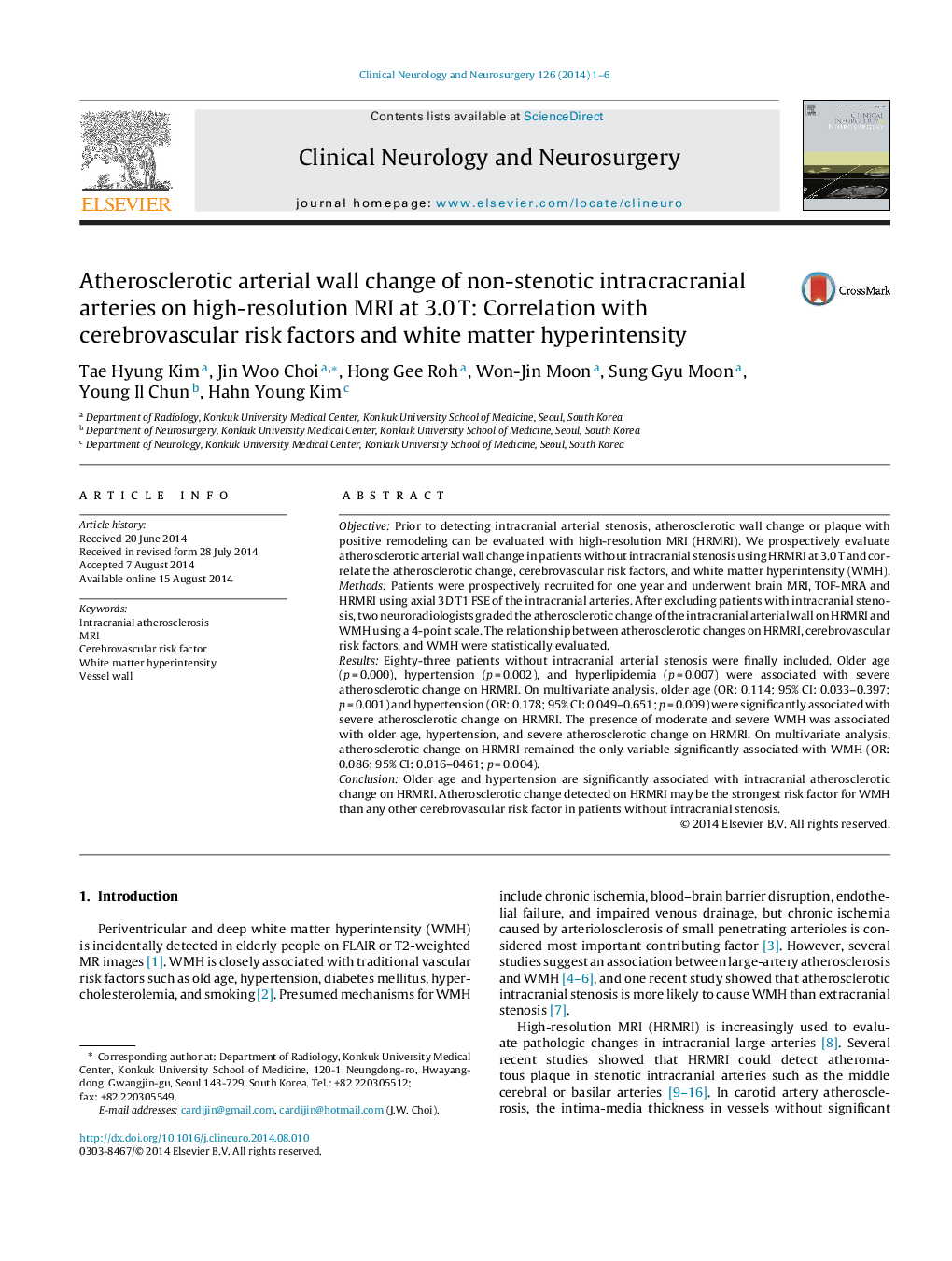| کد مقاله | کد نشریه | سال انتشار | مقاله انگلیسی | نسخه تمام متن |
|---|---|---|---|---|
| 3040005 | 1579696 | 2014 | 6 صفحه PDF | دانلود رایگان |

• A prospective study for evaluating relationship between cerebrovascular risk factors and intracranial arteries without stenosis was made.
• High-resolution MRI at 3.0 T was used to evaluate the intracranial atherosclerosis.
• The relationship between atherosclerotic changes, cerebrovascular risk factors, and white matter hyperintensities were evaluated.
• Older age and hypertension are significantly associated with intracranial atherosclerosis.
• Intracranial atherosclerosis detected on high-resolution MRI may be the strongest risk factor for white matter hyperintensity than any other cerebrovascular risk factors.
ObjectivePrior to detecting intracranial arterial stenosis, atherosclerotic wall change or plaque with positive remodeling can be evaluated with high-resolution MRI (HRMRI). We prospectively evaluate atherosclerotic arterial wall change in patients without intracranial stenosis using HRMRI at 3.0 T and correlate the atherosclerotic change, cerebrovascular risk factors, and white matter hyperintensity (WMH).MethodsPatients were prospectively recruited for one year and underwent brain MRI, TOF-MRA and HRMRI using axial 3D T1 FSE of the intracranial arteries. After excluding patients with intracranial stenosis, two neuroradiologists graded the atherosclerotic change of the intracranial arterial wall on HRMRI and WMH using a 4-point scale. The relationship between atherosclerotic changes on HRMRI, cerebrovascular risk factors, and WMH were statistically evaluated.ResultsEighty-three patients without intracranial arterial stenosis were finally included. Older age (p = 0.000), hypertension (p = 0.002), and hyperlipidemia (p = 0.007) were associated with severe atherosclerotic change on HRMRI. On multivariate analysis, older age (OR: 0.114; 95% CI: 0.033–0.397; p = 0.001) and hypertension (OR: 0.178; 95% CI: 0.049–0.651; p = 0.009) were significantly associated with severe atherosclerotic change on HRMRI. The presence of moderate and severe WMH was associated with older age, hypertension, and severe atherosclerotic change on HRMRI. On multivariate analysis, atherosclerotic change on HRMRI remained the only variable significantly associated with WMH (OR: 0.086; 95% CI: 0.016–0461; p = 0.004).ConclusionOlder age and hypertension are significantly associated with intracranial atherosclerotic change on HRMRI. Atherosclerotic change detected on HRMRI may be the strongest risk factor for WMH than any other cerebrovascular risk factor in patients without intracranial stenosis.
Journal: Clinical Neurology and Neurosurgery - Volume 126, November 2014, Pages 1–6